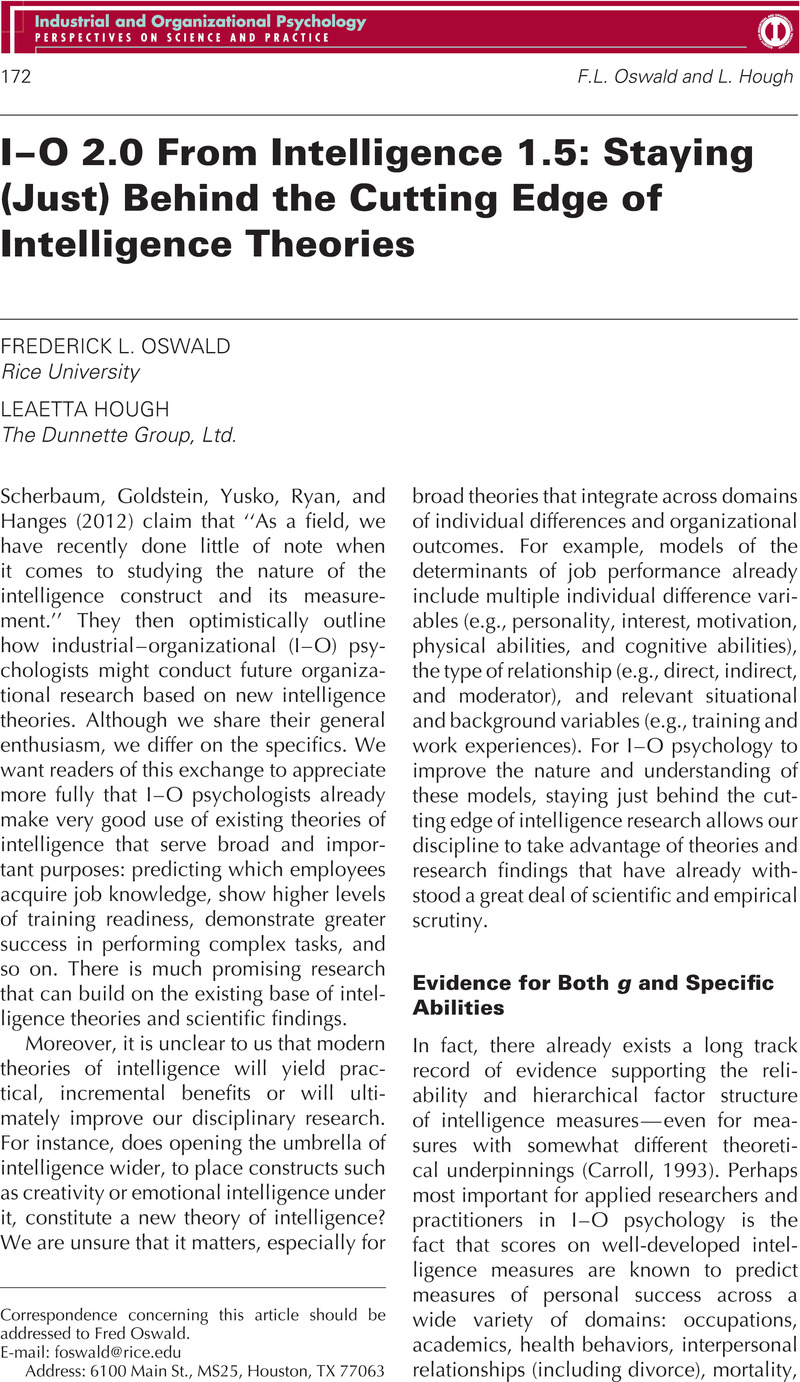Crossref Citations
This article has been cited by the following publications. This list is generated based on data provided by Crossref.
Hanges, Paul J.
Scherbaum, Charles A.
Goldstein, Harold W.
Ryan, Rachel
and
Yusko, Kenneth P.
2012.
I–O Psychology and Intelligence: A Starting Point Established.
Industrial and Organizational Psychology,
Vol. 5,
Issue. 2,
p.
189.
Ryan, Ann Marie
and
Ployhart, Robert E.
2014.
A Century of Selection.
Annual Review of Psychology,
Vol. 65,
Issue. 1,
p.
693.
Agnello, Paul
Ryan, Rachel
and
Yusko, Kenneth P.
2015.
Implications of modern intelligence research for assessing intelligence in the workplace.
Human Resource Management Review,
Vol. 25,
Issue. 1,
p.
47.
Chiaburu, Dan S.
Stoverink, Adam C.
Li, Ning
and
Zhang, Xin-an
2015.
Extraverts Engage in More Interpersonal Citizenship When Motivated to Impression Manage.
Journal of Management,
Vol. 41,
Issue. 7,
p.
2004.
Neubert, Jonas C.
Mainert, Jakob
Kretzschmar, André
and
Greiff, Samuel
2015.
The Assessment of 21st Century Skills in Industrial and Organizational Psychology: Complex and Collaborative Problem Solving.
Industrial and Organizational Psychology,
Vol. 8,
Issue. 2,
p.
238.
Fisher, Gwenith G.
Truxillo, Donald M.
Finkelstein, Lisa M.
and
Wallace, Lauren E.
2017.
Age discrimination: Potential for adverse impact and differential prediction related to age.
Human Resource Management Review,
Vol. 27,
Issue. 2,
p.
316.
Conte, Jeffrey M.
and
Harmata, Rebecca K.
2023.
Person-Centered Study of Cognitive Ability Dimensions Using Latent Profile Analysis.
Journal of Intelligence,
Vol. 11,
Issue. 5,
p.
80.



